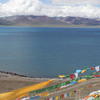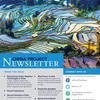Chenghe Guan, Jihoon Song, Michael Keith, Yuki Akiyama, Ryosuke Shibasaki, and Taisei Sato. 2020. “Delineating urban park catchment areas using mobile phone data: A case study of Tokyo.” Computers, Environment and Urban Systems, 81, May, Pp. 101474. Publisher's VersionAbstract
Urban parks can offer both physical and psychological health benefits to urban dwellers and provide social, economic, and environmental benefits to society. Earlier research on the usage of urban parks relied on fixed distance or walking time to delineate urban park catchment areas. However, actual catchment areas can be affected by many factors other than park surface areas, such as social capital cultivation, cultural adaptation, climate and seasonal variation, and park function and facilities provided. This study advanced this method by using mobile phone data to delineate urban park catchment area. The study area is the 23 special wards of Tokyo or tokubetsu-ku, the core of the capital of Japan. The location data of over 1 million anonymous mobile phone users was collected in 2011. The results show that: (1) the park catchment areas vary significantly by park surface areas: people use smaller parks nearby but also travel further to larger parks; (2) even for the parks in the same size category, there are notable differences in the spatial pattern of visitors, which cannot be simply summarized with average distance or catchment radius; and (3) almost all the parks, regardless of its size and function, had the highest user density right around the vicinity, exemplified by the density-distance function closely follow a decay trend line within 1-2 km radius of the park. As such, this study used the density threshold and density-distance function to measure park catchment. We concluded that the application of mobile phone location data can improve our understanding of an urban park catchment area, provide useful information and methods to analyze the usage of urban parks, and can aid in the planning and policy-making of urban parks.






